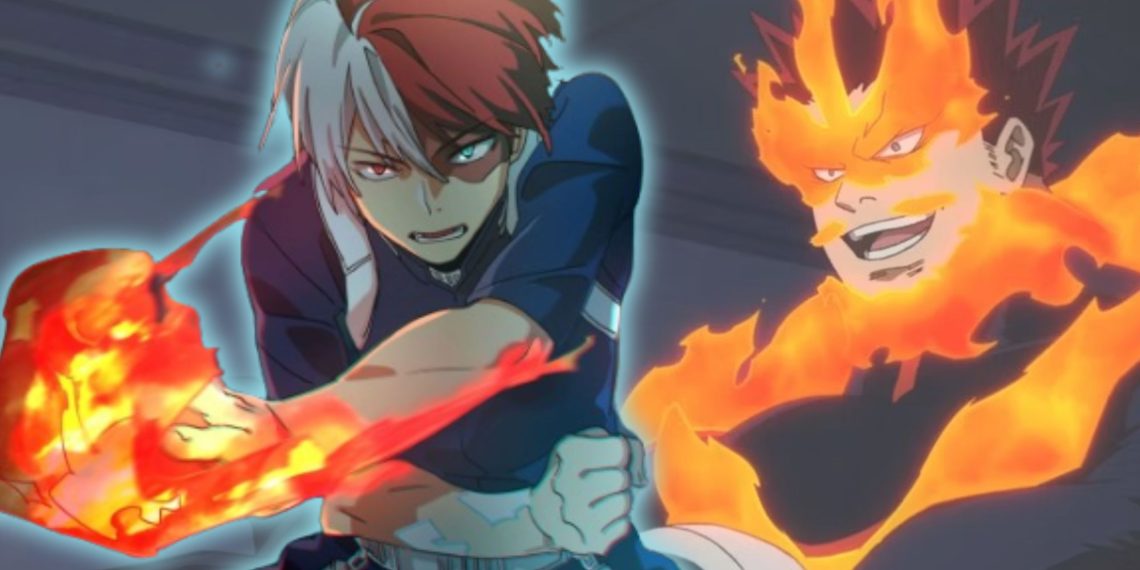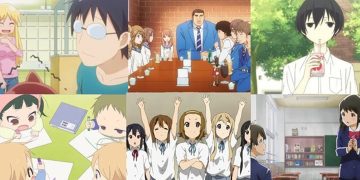The ending of My Hero Academia has left fans reflecting on various plot points, but none have been as divisive as Endeavor’s redemption arc.
Even weeks after the manga’s finale, the discourse around Endeavor’s character continues to stir intense debate.
This contentious storyline, which goes into the life and actions of Enji Todoroki, also known as Endeavor, was a critical element of the series.

Kohei Horikoshi, the creator of My Hero Academia, invested considerable time in addressing this plotline, especially in the epilogue.
However, despite the effort to provide closure and redemption for Endeavor, many readers remain unsatisfied, leading to what many consider one of the most controversial plot points in the series.
Evolution of Endeavor’s Redemption Arc
Endeavor’s redemption arc is a multifaceted storyline that unfolds significantly in the epilogue of My Hero Academia.
This ending aims to provide a sense of closure for Endeavor’s character by addressing his past wrongdoings and offering a path to atonement.
After the climactic events of the final war, Endeavor finds himself no longer able to continue his hero work.
This period of his life marks a significant turning point, as he decides to spend his remaining years reaching out to Toya Todoroki, his estranged son, in an attempt to make amends for his previous neglect.

This aspect of Endeavor’s redemption is presented as a heartfelt gesture. After years of ignoring Toya, Endeavor’s decision to reconnect with him is portrayed as a form of atonement.
On the surface, this move seems like a genuine effort to rectify past mistakes. Endeavor’s motivations, while complex, are grounded in a desire to make up for his earlier failures.
This part of the redemption arc aligns with the broader themes of redemption and personal growth that are central to My Hero Academia.
However, the redemption arc is not without its controversies. The narrative choices made to resolve Endeavor’s storyline, particularly the depiction of his past actions, have sparked significant debate among fans.
To understand why Endeavor’s redemption has become such a contentious issue, it is essential to examine the darker aspects of his past and their impact on the characters around him.
Endeavor’s Abusive Past and Its Effects
One of the most troubling aspects of Endeavor’s redemption arc is the portrayal of his abusive behavior towards his wife, Rei Todoroki.
The manga goes into Endeavor’s history, revealing a disturbing pattern of abuse that occurred before the birth of Shoto, his youngest child.
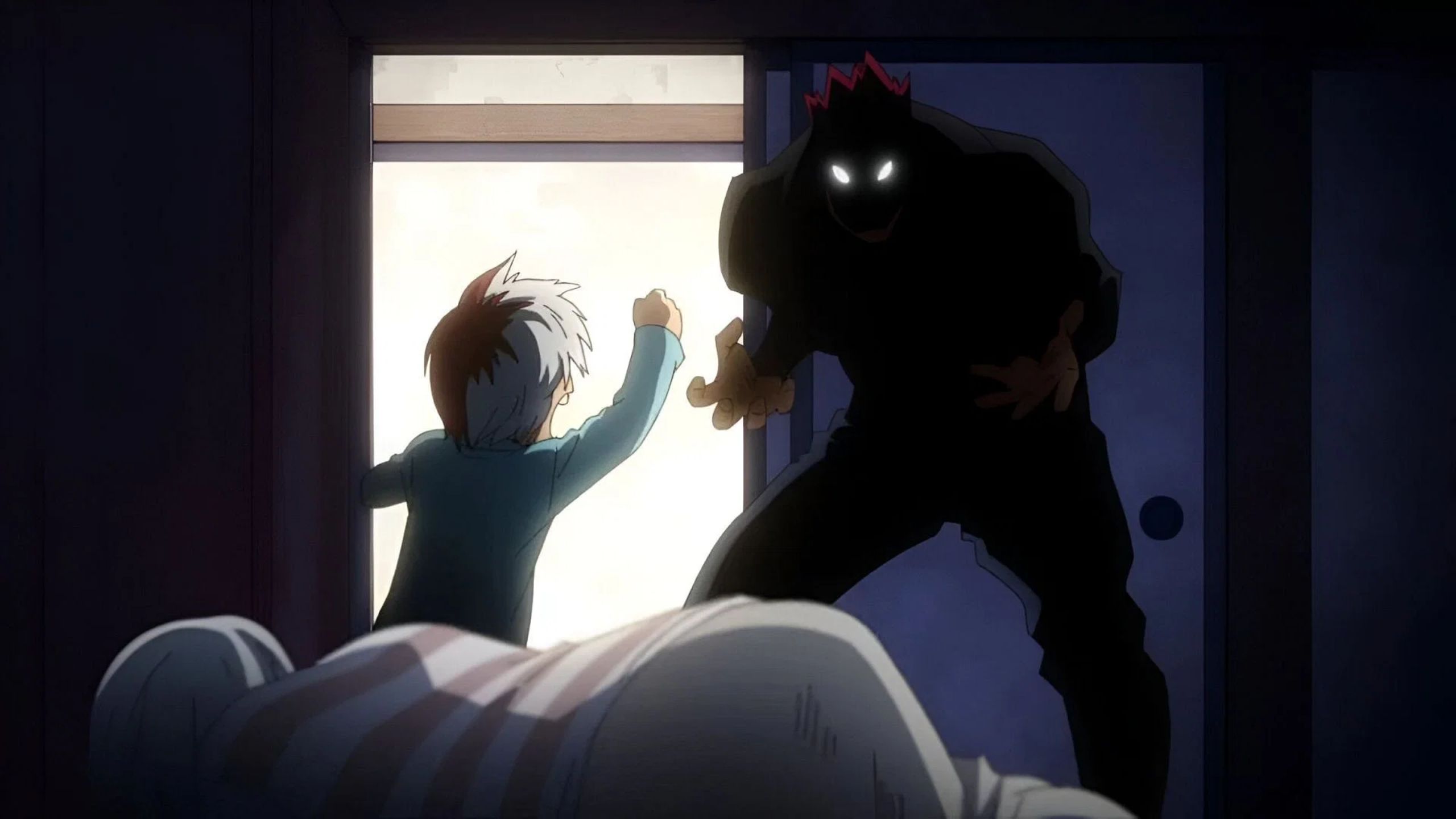
Endeavor’s decision to enter into a quirk marriage with Rei was driven by his ambition to produce a child who would inherit both of their powerful quirks fire and ice.
This decision set the stage for a series of traumatic events for Rei.
The depiction of Rei’s suffering is both graphic and unsettling. Rei, already physically and emotionally drained from giving birth to multiple children, was subjected to relentless abuse by Endeavor.
This abuse stemmed from Endeavor’s frustration over their failure to produce a child with both quirks, leading him to force Rei into repeated pregnancies.
The narrative does not shy away from showcasing the harsh reality of Rei’s situation, highlighting the emotional and physical toll of Endeavor’s actions.
The culmination of this abuse is the birth of Shoto, the child Endeavor had hoped for. Shoto’s birth, while fulfilling Endeavor’s ambition, came at a significant cost.
Rei’s torment continued even after Shoto’s arrival, as Endeavor’s demands and abuse persisted.
The manga portrays Rei as a victim caught in a cycle of suffering, illustrating the profound impact of Endeavor’s actions on her well-being.
Rei’s Role in Endeavor’s Later Life
The depiction of Rei caring for Endeavor in the epilogue adds another layer of complexity to the redemption arc.
Following Endeavor’s disability, Rei takes on the role of caretaker for her abuser.

This narrative choice has been particularly controversial, as it raises questions about forgiveness, victimhood, and the limits of redemption.
For many readers, the portrayal of Rei’s continued role in Endeavor’s life feels unsettling and morally ambiguous.
Rei’s character is presented as someone who endures tremendous suffering due to Endeavor’s actions.
Her decision to care for Endeavor, despite the abuse she endured, is portrayed as a form of sacrifice and selflessness.
However, this portrayal has been met with criticism from fans who feel that it undermines the severity of Endeavor’s past actions.
The narrative’s attempt to reconcile Rei’s role as both a victim and caretaker has left many readers grappling with the ethical implications of such a resolution.
Impact on Shoto Todoroki
Endeavor’s abusive behavior had far-reaching consequences, particularly for Shoto Todoroki.
Shoto, who was subjected to harsh and often brutal training by his father, bears the brunt of Endeavor’s misguided ambitions.
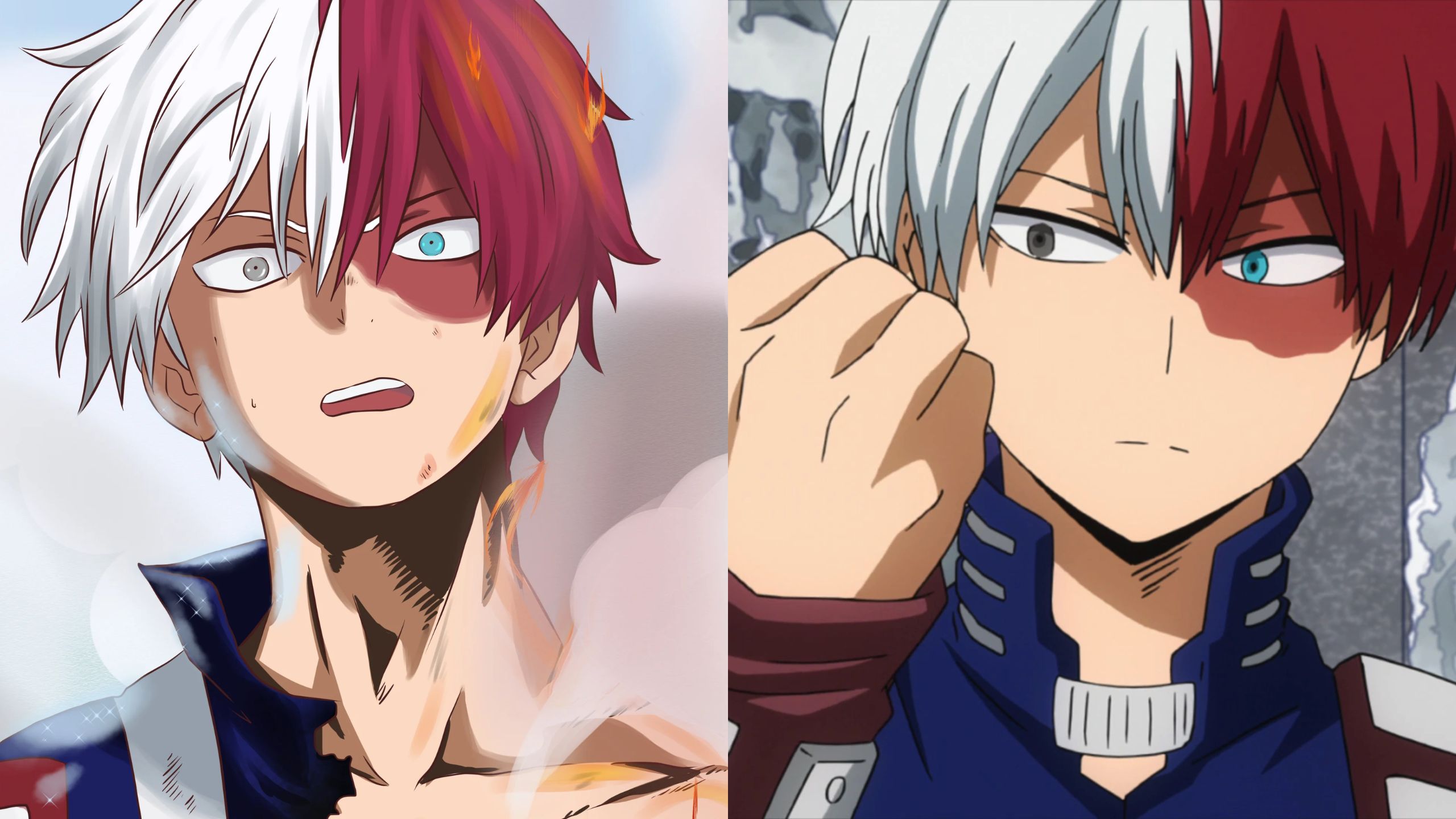
The manga depicts Endeavor’s training methods as excessively severe, resulting in physical and emotional trauma for Shoto.
This aspect of Endeavor’s character arc is crucial in understanding the broader impact of his actions.
One of the key scenes in Endeavor’s backstory reveals Shoto’s emotional and expressive nature before he was subjected to his father’s harsh training.
This earlier version of Shoto contrasts sharply with the more reserved and emotionally distant individual he becomes as an adult.
The abuse and rigorous training sessions inflicted by Endeavor have a profound effect on Shoto’s personality, shaping him into someone who struggles with expressing his emotions and dealing with his trauma.
Shoto’s transformation from an emotionally open child to a reserved and stoic adult highlights the deep psychological impact of Endeavor’s actions.
The manga explores how Shoto’s experiences with his father have affected his relationships and personal development.
The portrayal of Shoto’s struggles serves as a poignant reminder of the lasting effects of abusive behavior and the difficulties of overcoming such trauma.
Effects on Fuyumi and Natsuo Todoroki
Endeavor’s impact extends beyond Shoto, affecting his two middle siblings, Fuyumi and Natsuo Todoroki.
Fuyumi, in particular, is forced into the role of a surrogate mother for her younger siblings from a young age.
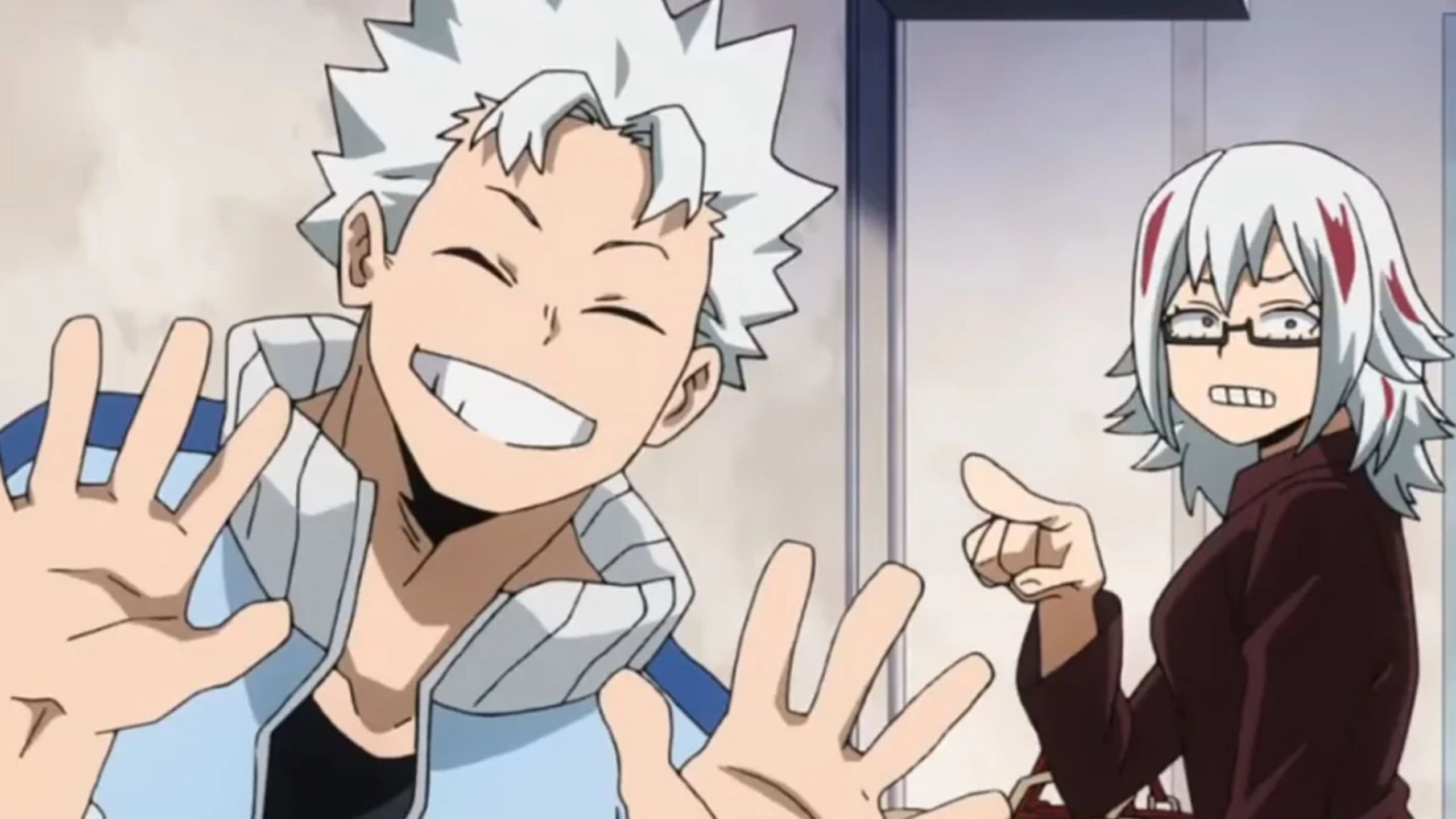
This responsibility places a significant burden on her, as she is expected to manage the household and care for her siblings while dealing with the fallout from Endeavor’s actions.
Natsuo, on the other hand, is deeply resentful of his father and chooses to leave the family home.
His decision to live separately with his partner reflects his refusal to forgive Endeavor and his desire to distance himself from the toxic environment created by his father’s behavior.
Natsuo’s departure underscores the extent of the damage caused by Endeavor’s past actions, highlighting the strain on family relationships and the long-lasting impact of abuse.
Fan Reactions and Controversies
The controversy surrounding Endeavor’s redemption arc reflects the broader debates within the fan community about the handling of complex characters and themes.
While some readers appreciate the attempt to offer a nuanced portrayal of redemption and personal growth, others find the resolution unsatisfactory given the severity of Endeavor’s past actions.
this scene! pic.twitter.com/anEPvWuLLG https://t.co/gJ6yCq4koh
— Shreya⁷ (@chuuyabaki) August 13, 2024
The portrayal of Rei’s role in caring for Endeavor, coupled with the depiction of Shoto’s trauma, has led to different opinions on the effectiveness of the redemption arc.
For many fans, the redemption of Endeavor feels incomplete and insufficient. The unresolved issues surrounding Rei’s suffering and the long-lasting effects on Shoto and his siblings contribute to a sense of discontent.
The complexity of human behavior and the challenges of addressing such themes in a narrative context are evident in the mixed reactions to Endeavor’s storyline.
The controversy highlights the difficulty of crafting a resolution that resonates with all readers and addresses the moral and emotional implications of the character’s past actions.
Broader Implications for Storytelling
The debate over Endeavor’s redemption arc underscores the challenges of storytelling in addressing complex and morally ambiguous characters.
Redemption stories often grapple with the balance between acknowledging past wrongs and providing a path to atonement.
Endeavor’s arc illustrates the difficulties of reconciling deeply flawed characters with their quest for redemption, highlighting the limitations of narrative resolution in addressing the full scope of a character’s impact.

As My Hero Academia concludes, Endeavor’s redemption remains a focal point of discussion and debate.
The complexities of his character and the intricacies of his past actions continue to provoke thought and analysis among fans.
The controversy surrounding this plotline reflects broader questions about forgiveness, redemption, and the nature of personal growth in storytelling.
Endeavor’s redemption arc in My Hero Academia is a highly contentious aspect of the series.
The portrayal of his abusive past, the depiction of Rei’s role as a caretaker, and the impact on his children have all contributed to the controversy.
While the narrative aims to provide a resolution for Endeavor’s character, the execution has left many readers questioning the effectiveness and morality of the redemption offered.
As discussions about this plotline continue, Endeavor’s redemption stands as a testament to the challenges of addressing complex themes in storytelling and the enduring impact of character-driven narratives.

